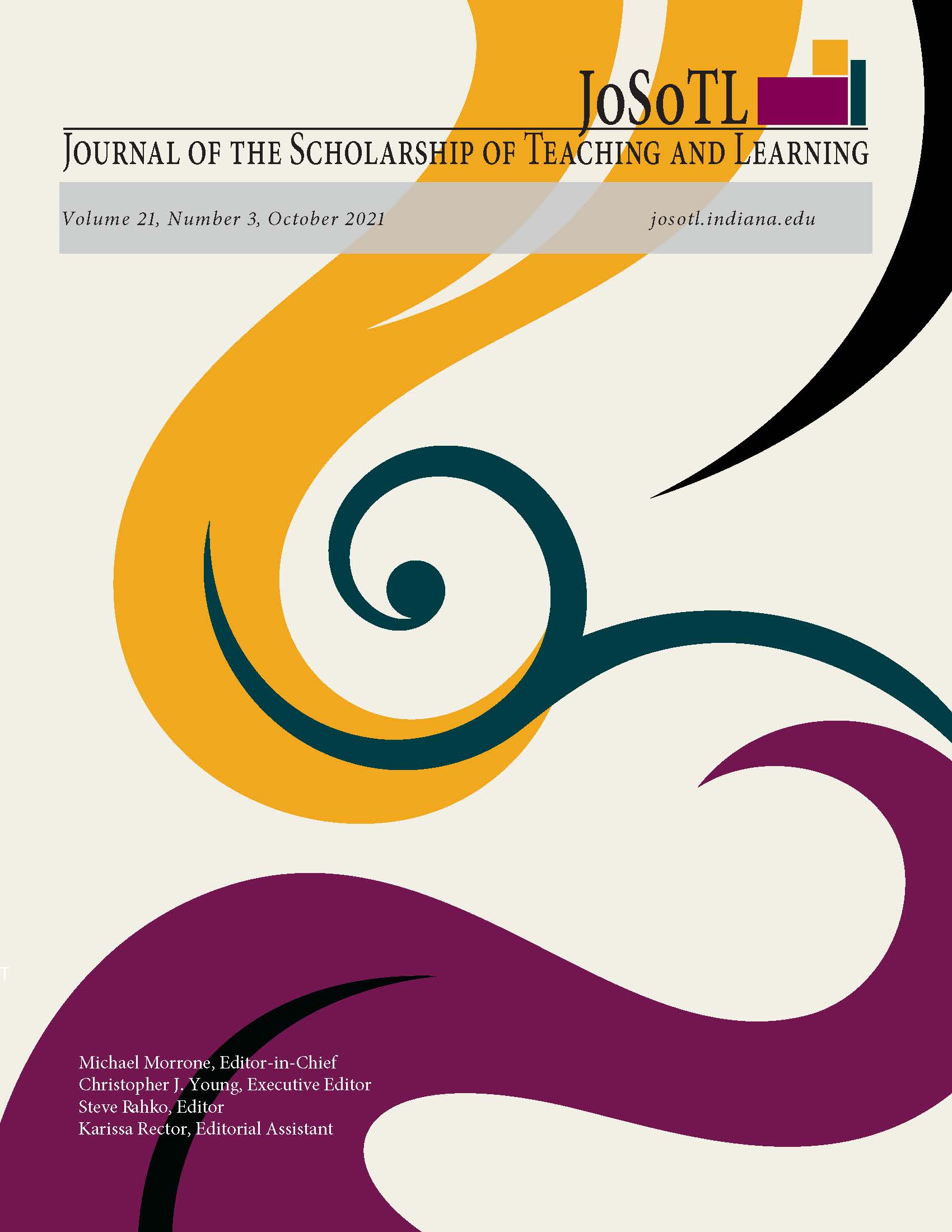Impact of working conditions on faculty teaching: Analysis of full-time tenure track and part time non-tenure track faculty
Main Article Content
Abstract
The following exploration examined the impact of working conditions on faculty teaching for full-time faculty and non-tenure track faculty within an academic department at a large Midwestern university to determine whether employment status and working conditions potentially impacted student learning outcomes. Questions asked of participating faculty focused on factors related to, or influencing, teaching that may improve or hinder student learning. Factors such as available resources, interaction with department administrators and other faculty, job satisfaction, work-life integration, and mentorship were explored through written surveys and one-on-one interviews. Twelve faculty, out of a target population of 33, provided insight as to concerns or issues they felt impeded or supported teaching efforts. Although the exploration contained a small sample size, department administrators implemented changes to address faculty concerns to reduce “disconnects” and issues mentioned by faculty members. Primary changes occurred around part time faculty input on curriculum development and interactions with department administrators and full time faculty. While still ongoing, initial feedback is positive and indicates faculty are adapting to the changes. Further work is necessary to examine individual feelings of worth and value, as well as exploring actual student learning outcomes across courses.
Downloads
Article Details

This work is licensed under a Creative Commons Attribution 4.0 International License.
- Authors retain copyright and grant the Journal of the Scholarship of Teaching and Learning (JoSoTL) right of first publication with the work simultaneously licensed under a Creative Commons Attribution License, (CC-BY) 4.0 International, allowing others to share the work with proper acknowledgement and citation of the work's authorship and initial publication in the Journal of the Scholarship of Teaching and Learning.
- Authors are able to enter separate, additional contractual agreements for the non-exclusive distribution of the journal's published version of the work (e.g., post it to an institutional repository or publish it in a book), with an acknowledgement of its initial publication in the Journal of the Scholarship of Teaching and Learning.
- In pursuit of manuscripts of the highest quality, multiple opportunities for mentoring, and greater reach and citation of JoSoTL publications, JoSoTL encourages authors to share their drafts to seek feedback from relevant communities unless the manuscript is already under review or in the publication queue after being accepted. In other words, to be eligible for publication in JoSoTL, manuscripts should not be shared publicly (e.g., online), while under review (after being initially submitted, or after being revised and resubmitted for reconsideration), or upon notice of acceptance and before publication. Once published, authors are strongly encouraged to share the published version widely, with an acknowledgement of its initial publication in the Journal of the Scholarship of Teaching and Learning.
References
Ehrenberg, R. G., & Zhang, L. (2005). Do tenured and tenure-track faculty matter? The Journal of Human Resources, 40(3), 647–659. doi: 10.3368/jhr.XL.3.647
Johnson, H., & Mejia, M.C. (2014). Online learning and student outcomes in California’s community colleges. Public Policy Institute of California. Retrieved from: http://www.ppic.org/content/pubs/report/R_514HJR.pdf
Kezar, A. (2013). Examining non-tenure track faculty perceptions of how departmental policies and practices shape their performance and ability to create student learning at four-year institutions. Research in Higher Education, 54(5), 571-598. Retrieved February, 2019, from www.jstor.org/stable/23470964
Kezar, A., & Maxey, D. (2012). Missing from the institutional data picture: Non-tenure-track faculty. New Directions for Institutional Research, 155, 47-65. doi.org/10.1002/ir.20021
Yakoboski, P.J. (2016). Adjunct views of adjunct positions. Change: The Magazine of Higher Learning, 48(3), 54-59. doi.org/10.1080/00091383.2016.1170553
Yakoboski, P. J., and Foster, J. E. (2014). Strategic utilization of adjunct and other contingent faculty. TIAA-CREF Institute Trends and Issues. Retrieved from: https://www.tiaa-crefinstitute.org/public/institute/research/strategic-utilization-of-adjunct-and-other-contingent-faculty
